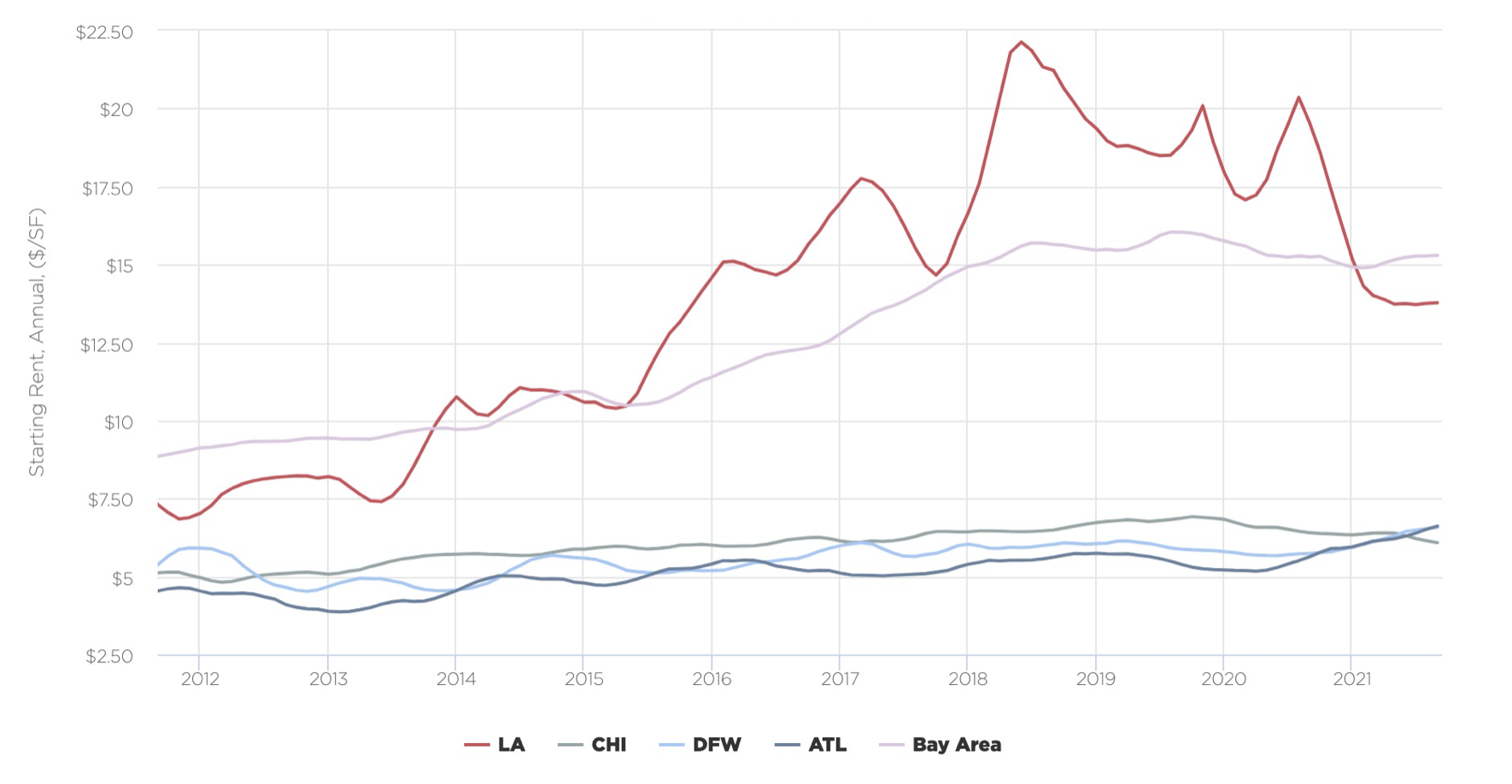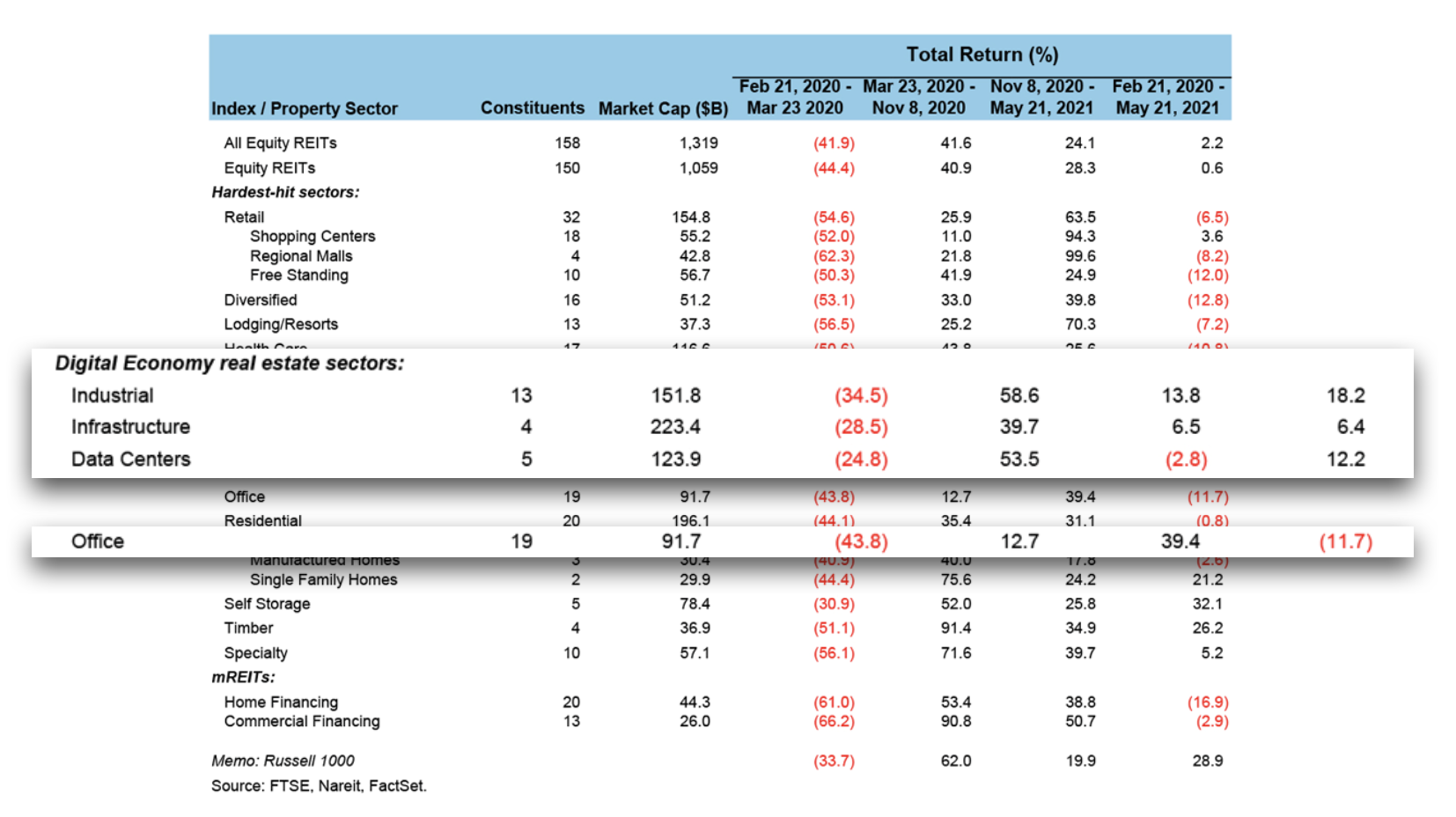Help us direct you to the right place to sign up

Industrial real estate has been a standout sector over the last few years. Before the COVID-19 pandemic, industrial rents underwent explosive growth, and during the pandemic, industrial rents held up better than all other sectors. What explains this standout performance? And can we expect it to continue in the coming months and years?
The success of the industrial sector is inextricably linked to the continued growth of e-commerce. The e-commerce revolution created an entirely new subclass of industrial warehouses, catering to the needs of online businesses. These businesses, primarily Amazon, have reached a new level of economic primacy during the pandemic, and now are some of the largest tenants in the industrial real estate space. Companies like Amazon and UPS are executing unprecedented deals for massive new custom-built spaces. Size is not the only thing that sets these new e-commerce deals apart. New logistics centers have elaborate requirements: high strength concrete flooring, sophisticated robotic conveyor systems, extra high ceilings, and expansion capacity. In aggregate, these requirements substantially increase buildout costs of warehouses – closer to the cost of an office space buildout than traditional industrial. Landlords need to recoup these upfront capital costs, however. As such, these next-gen warehouses lease at prices previously unprecedented in the industrial sector.

High rents for new warehouses are not enough to explain the performance of the industrial sector. In addition to increases in average rent in the industrial sector, valuations have exploded. This increase in valuation has even outstripped the increase in rents, lowering cap rates to as low as 4% in some instances.

What is driving this unprecedented interest? The resilient performance of the industrial sector during the pandemic has made it seem like a safe asset class. Simultaneously, the pandemic has dealt an unprecedented shock to office space and devastated a previously stable asset class. Real estate investors have been forced to adapt, as portfolios heavy on office space suddenly have higher risk and lower growth prospects. Investors reallocated their investments towards industrial real estate and away from office space. This major institutional shift has reshaped prices, increasing demand for industrial and decreasing it for office space.

As with all trends in commercial real estate, it is important to understand whether the heat of the industrial sector will continue. The changes ushered in by the pandemic are here to stay — remote work looks likely to permanently remove a substantial portion of in-person office spaced demand, and the demand for online shopping with the attendant warehouses is permanent. The finances already reflect this change: cap rates and rents have changed places with office and industrial. Are these assumptions correct? And how should investors look at valuations going forward? Join CompStak for the insight and data that will give you the answer.
Related Posts
Breaking Down a Lease Comp: Unlocking the Value of Key Data Points in Commercial Real Estate


Breaking Down a Lease Comp: Unlocking the Value of Key Data Points in Commercial Real Estate
How to Evaluate a Commercial Real Estate Comps Database


